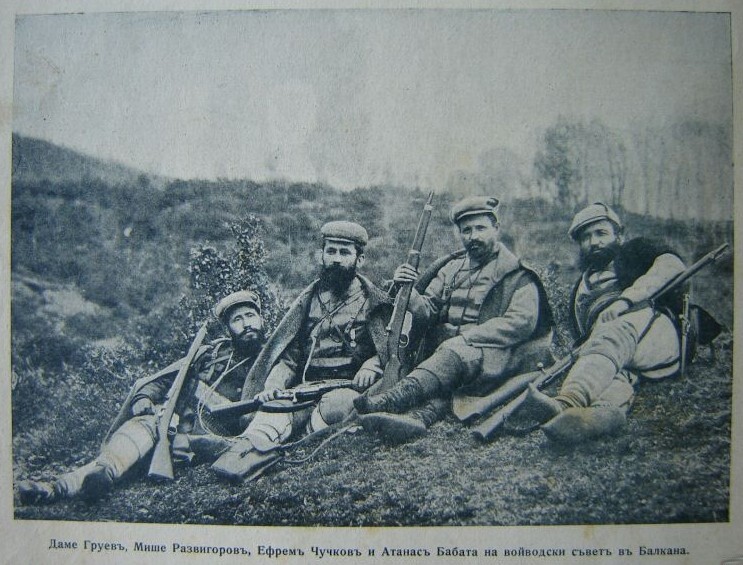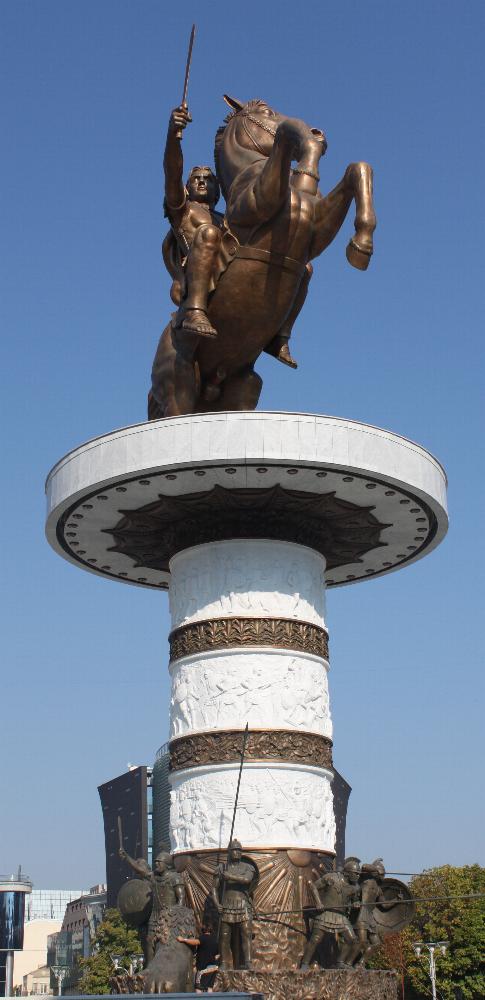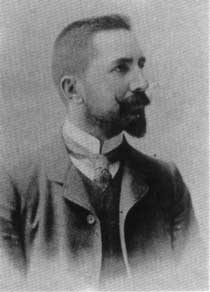|
Damyan Gruev
Damyan Yovanov Gruev (,The first names can also be transliterated as ''Damjan Jovanov'', after Bulgarian Дамян Йованов Груев and Macedonian Дамјан Јованов Груев. The last name is also sometimes rendered as ''Grueff''. originally spelled in pre-1945 Bulgarian orthography as ''Дамянъ Йовановъ Груевъ''; January 19, 1871 – December 23, 1906) was а Bulgarian teacher, revolutionary and insurgent leader in the Ottoman regions of Macedonia and Thrace. He was one of the six founders of the Internal Macedonian Revolutionary Organization. Despite his Bulgarian self-identification, according to the post-World War II Macedonian historiography, he was an ethnic Macedonian. Biography Early years Dame Gruev was born in 1871 in the village of Smilevo, Monastir Vilayet, Ottoman Empire (present-day North Macedonia). He received his elementary education in Smilevo and continued his education in the Bulgarian Men's High School of Thessalo ... [...More Info...] [...Related Items...] OR: [Wikipedia] [Google] [Baidu] |
Smilevo
Smilevo () is a village in North Macedonia, municipality of Demir Hisar. It is famous for the Ilinden-Preobrazhenie uprising which started in the village in the morning of August 2, 1903 (see Battle of Smilevo). The decision for the uprising was taken during the Smilevo congress of the Internal Macedonian Revolutionary Organization (IMRO) from May 2 to May 7, 1903. The village is the native place of Dame Gruev, one of the founders and most prominent leaders of IMRO. Smilevo also has a statue of Dame Gruev on one of its mountain sides. Below this mountainous terrain is the village. The village has one of the largest schools in the Demir Hisar municipality. Geography The village is situated in the southernmost part of Demir Hisar municipality on the foothills of Bigla mountain on 880 m above sea level on an area of 16.4 square kilometres, 1,400 ha of which are forests, 113 ha are pastures and 104 ha are cultivated area. It is 10 km from the Demir Hisar&n ... [...More Info...] [...Related Items...] OR: [Wikipedia] [Google] [Baidu] |
Macedonian Historiography
Historiography in North Macedonia is the methodology of historical studies used by the historians of that country. It has been developed since 1945 when SR Macedonia became part of Yugoslavia. According to the German historian it has preserved nearly the same agenda as the Marxist historiography from the times of the Socialist Federal Republic of Yugoslavia. The generation of Macedonian historians closely associated with the Yugoslav period who worked on the actual national myths of that time are still in charge of the institutions. In fact, in the field of historiography, Yugoslav communism and Macedonian nationalism are closely related. According to the Austrian historian , modern Macedonian historiography is highly politicized, because the Macedonian nation-building process is still in development. Diverging approaches are discouraged and people who express alternative views risk economic limitations, failure of academic career and stigmatization as "national traitors". T ... [...More Info...] [...Related Items...] OR: [Wikipedia] [Google] [Baidu] |
Great School
The University of Belgrade ( sr, / ) is a public university in Serbia. It is the oldest and largest modern university in Serbia. Founded in 1808 as the Belgrade Higher School in revolutionary Serbia, by 1838 it merged with the Kragujevac-based departments into a single university. The university has around 97,700 enrolled students and over 4,800 academic staff members. Since its founding, the university has educated more than 378,000 bachelors, around 25,100 magisters, 29,000 specialists and 14,670 doctors. The university comprises 31 faculties, 12 research institutes, the university library, and 9 university centres. The faculties are organized into four groups: social sciences and humanities; medical sciences; natural sciences and mathematics; and technological sciences. On the prestigious ''Shanghai Ranking'' (ARWU), the University of Belgrade ranks between 401st and 500th place, according to the most recent (2018) global ranking. In 2014, it ranked 151–200, specifica ... [...More Info...] [...Related Items...] OR: [Wikipedia] [Google] [Baidu] |
Grandes écoles
Grandes may refer to: * Agustín Muñoz Grandes, Spanish general and politician *Banksia ser. Grandes, a series of plant species native to Australia * Grandes y San Martín, a municipality located in the province of Ávila, Castile and León, Spain *Grandes (islands) Grandes ( el, Γκράντες) is a group of three small islands off the east coast of Crete. Administratively it comes within the Itanos municipality in Lasithi. Grandes can be seen from the Minoan site of Roussolakkos near Palekastro as ca ..., a group of three small islands in the Aegean Sea off the east coast of Crete * ''Grandes'' (album), by Maná {{disambig, geo, surname ... [...More Info...] [...Related Items...] OR: [Wikipedia] [Google] [Baidu] |
Saint Sava Society
The Society of Saint Sava or Saint Sava Society ( sr, Друштво „Свети Сава“/Društvo „Sveti Sava“) was a Serbian non-governmental association with the aim of maintaining and protecting the Serb people The Serbs ( sr-Cyr, Срби, Srbi, ) are the most numerous South Slavic ethnic group native to the Balkans in Southeastern Europe, who share a common Serbian ancestry, culture, history and language. The majority of Serbs live in their na ... in the Ottoman Empire, in Old Serbia and Macedonia (region), Macedonia, and in Austro-Hungarian Bosnia and Herzegovina, founded in 1886 in Belgrade, the capital of the Kingdom of Serbia. It was active, with a brief pause during the First World War, until the Invasion of Yugoslavia (1941). History Work in Macedonia The society worked for dissemination of Serbian propaganda in the region of Macedonia and Old Serbia. The Society offered paid scholarships to those who called themselves Association of Serbo-Macedon ... [...More Info...] [...Related Items...] OR: [Wikipedia] [Google] [Baidu] |
Belgrade
Belgrade ( , ;, ; Names of European cities in different languages: B, names in other languages) is the Capital city, capital and List of cities in Serbia, largest city in Serbia. It is located at the confluence of the Sava and Danube rivers and the crossroads of the Pannonian Basin, Pannonian Plain and the Balkan Peninsula. Nearly 1,166,763 million people live within the administrative limits of the City of Belgrade. It is the third largest of all List of cities and towns on Danube river, cities on the Danube river. Belgrade is one of the List of oldest continuously inhabited cities, oldest continuously inhabited cities in Europe and the world. One of the most important prehistoric cultures of Europe, the Vinča culture, evolved within the Belgrade area in the 6th millennium BC. In antiquity, Thracians, Thraco-Dacians inhabited the region and, after 279 BC, Celts settled the city, naming it ''Singidunum, Singidūn''. It was Roman Serbia, conquered by the Romans under the reign ... [...More Info...] [...Related Items...] OR: [Wikipedia] [Google] [Baidu] |
IMRO
The Internal Macedonian Revolutionary Organization (IMRO; bg, Вътрешна Македонска Революционна Организация (ВМРО), translit=Vatrešna Makedonska Revoljucionna Organizacija (VMRO); mk, Внатрешна Македонска Револуционерна Организација, translit=Vnatrešna Makedonska Revolucionerna Organizacija), was a secret revolutionary society founded in the Ottoman territories in Europe, that operated in the late 19th and early 20th centuries. Founded in 1893 in Salonica, initially, it aimed to gain autonomy for Macedonia (region), Macedonia and Adrianople Vilajet, Adrianople regions in the Ottoman Empire, however, later it became an agent serving Kingdom of Bulgaria, Bulgarian interests in Balkan politics. IMRO group modeled itself after the Internal Revolutionary Organization of Vasil Levski and accepted its motto "Freedom or Death" (Свобода или смърть). Starting in 1896 it fought t ... [...More Info...] [...Related Items...] OR: [Wikipedia] [Google] [Baidu] |
Bulgarian Men's High School Of Thessaloniki
The Sts. Cyril and Methodius Bulgarian Men's High School of Thessaloniki ( bg, Солунска българска мъжка гимназия „Св. св. Кирил и Методий“, ''Solunska balgarska mazhka gimnazia „Sv. sv. Kiril i Metodiy“'') was the first Bulgarian high school in Macedonia. One of the most influential Bulgarian educational centres in Macedonia, it was founded in autumn 1880 in Ottoman Thessaloniki (today in Greece) and existed until 1913. Foundation The first Bulgarian school in Thessaloniki was founded in 1871 next to the church of Agios Athanasios. Following the April Uprising of 1876, the Russo-Turkish War (1877–1878), the Kresna–Razlog uprising and other events, the Bulgarian educational cause in Macedonia had to live through a number of blows. Exploiting anti-Bulgarian sentiment among government officials, Greek bishops succeeded in shutting down a lot of Bulgarian schools and in re-introducing the Greek language to Bulgarian church ... [...More Info...] [...Related Items...] OR: [Wikipedia] [Google] [Baidu] |
Gruev Razvigorov Chuchkov Babata
Gruev ( bg, Груев) is a Bulgarian masculine surname, its feminine counterpart is Grueva. Notable people with the surname include: * Aleksandar Gruev (born 1983), Bulgarian basketball player * Dame Gruev (1871–1906), Bulgarian teacher **Gruev Cove in Antarctica, named after Dame Gruev * Iliya Gruev (born 1969), Bulgarian footballer * Ilia Gruev (footballer, born 2000), Bulgarian footballer * Vasil Gruev (born 1926), Bulgarian cross country skier * Yoakim Gruev Joakim Gruev ( bg, Йоаким Груев, died 1912) was a Bulgarian teacher and translator Translation is the communication of the meaning of a source-language text by means of an equivalent target-language text. The English languag ... (died 1912), Bulgarian teacher and translator {{surname Bulgarian-language surnames ... [...More Info...] [...Related Items...] OR: [Wikipedia] [Google] [Baidu] |
Hristo Tatarchev
Hristo Tatarchev ( Macedonian and ; December 16, 1869 – January 5, 1952) was a Bulgarian doctor and revolutionary, the first leader of the revolutionary movement in Macedonia and Adrianople Thrace. He wrote a memoirs called ''The First Central Committee of the IMRO'' (1928). Tatarchev authored several political journalism works between the First and Second World War. Despite his Bulgarian ethnic identification, according to post-WWII Macedonian historiography, he was an ethnic Macedonian. Tatarchev was born in the town of Resen in Ottoman Macedonia to a rich family. His father Nikola Tatarchev was a successful banker, and his mother Katerina was a descendant of a prominent family. Hristo Tatarchev received his initial education in Resen, then he moved to Eastern Rumelia and studied in Bratsigovo (1882) and eventually at the secondary school for boys in Plovdiv (1883–87). It was at that time when he participated in the Unification of Bulgaria and enrolled in a students' ... [...More Info...] [...Related Items...] OR: [Wikipedia] [Google] [Baidu] |
Vilayet Of Adrianople
The Vilayet of Adrianople or Vilayet of Edirne ( ota, ولايت ادرنه; ''Vilâyet-i Edirne'') was a first-level administrative division (vilayet) of the Ottoman Empire. This vilayet was split between Turkey and Greece in 1923, culminating in the formation of Western and Eastern Thrace after World War I as part of the Treaty of Lausanne. A small portion of the Vilayet was given to Bulgaria in the Treaty of Bucharest (1913) after the Balkan wars. In the late 19th century it reportedly had an area of .Europe by Éliseé Reclus, page 152 In the east it bordered with the Istanbul Vilayet, the |
Thrace
Thrace (; el, Θράκη, Thráki; bg, Тракия, Trakiya; tr, Trakya) or Thrake is a geographical and historical region in Southeast Europe, now split among Bulgaria, Greece, and Turkey, which is bounded by the Balkan Mountains to the north, the Aegean Sea to the south, and the Black Sea to the east. It comprises southeastern Bulgaria (Northern Thrace), northeastern Greece (Western Thrace), and the European part of Turkey ( East Thrace). The region's boundaries are based on that of the Roman Province of Thrace; the lands inhabited by the ancient Thracians extended in the north to modern-day Northern Bulgaria and Romania and to the west into the region of Macedonia. Etymology The word ''Thrace'' was first used by the Greeks when referring to the Thracian tribes, from ancient Greek Thrake (Θρᾴκη), descending from ''Thrāix'' (Θρᾷξ). It referred originally to the Thracians, an ancient people inhabiting Southeast Europe. The name ''Europe'' first referred to ... [...More Info...] [...Related Items...] OR: [Wikipedia] [Google] [Baidu] |



.jpg)



